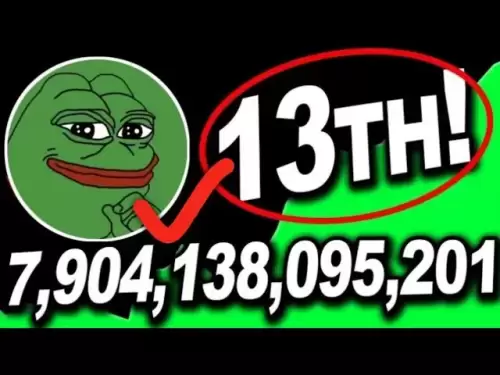 |
|
 |
|
 |
|
 |
|
 |
|
 |
|
 |
|
 |
|
 |
|
 |
|
 |
|
 |
|
 |
|
 |
|
 |
|
The Mustard Seedというタイトルの新しい出版物であるJoe Burnettは、Unchainedの市場調査のディレクターであり、2035年までにCoinあたり1,000万ドルに達することを想定している論文をアウトしています。

Unchained’s Joe Burnett envisions a scenario where Bitcoin (BTC) could reach $10 million per coin by 2035, fueled by two key transformations: the “great flow of capital” into an asset with absolute scarcity and the “acceleration of deflationary technology.”
UnchainedのJoe Burnettは、Bitcoin(BTC)が2035年までにコインあたり1,000万ドルに達するシナリオを想定しています。2つの重要な変換に促進されます。「資本の大きな流れ」は絶対的な希少性と「デフル技術の加速」です。
This is the core thesis of The Mustard Seed, a new quarterly letter launched by Burnett, director of market research at the crypto investment firm. The publication takes aim at the prevailing macroeconomic commentary, which Burnett says tends to focus too narrowly on the next earnings report or the immediate price volatility.
これは、暗号投資会社の市場調査部長であるバーネットが立ち上げた新しい四半期レターであるマスタードシードの中核論文です。この出版物は、一般的なマクロ経済の解説を目指しています。これは、バーネットが次の収益報告書または即時の価格のボラティリティに狭く焦点を当てる傾向があると述べています。
In contrast, The Mustard Seed announces its mission clearly: “Unlike most financial commentary that fixates on the next quarter or next year, this letter takes the long view—identifying profound shifts before they become consensus.”
対照的に、マスタードシードはその使命を明確に発表しています。「次の四半期または翌年に固定するほとんどの財政的な解説とは異なり、この手紙は長い見解を取ります。
At the heart of Burnett’s outlook is the observation that the global financial system—comprising roughly $900 trillion in total assets—faces ongoing risks of “dilution or devaluation.” Bonds, currencies, equities, gold, and real estate each have expansionary or inflationary components that erode their store-of-value function.
Burnettの見通しの中心にあるのは、グローバルな金融システム(総資産で約900兆ドルが継続すること)が「希薄化または切り下げ」の継続的なリスクを重視しているという観察です。債券、通貨、株式、金、および不動産には、それぞれ価値のある機能を侵食する拡張またはインフレコンポーネントがあります。
As capital flowed into these assets over decades, it encountered a natural tendency toward dilution or devaluation. This is a critical point that several commentators have missed, Burnett says.
資本が数十年にわたってこれらの資産に流れ込むと、それは希釈または切り下げの自然な傾向に遭遇しました。これは、いくつかのコメンテーターが見逃した重要なポイントです、とバーネットは言います。
Capital is constantly searching for a lower potential energy state—much like water flows downhill and seeks the lowest elevation. Before Bitcoin, wealth had no true escape from dilution or devaluation. No matter where capital was deployed—in real estate, bonds, gold, or stocks—each category acted like an “open bounty,” rendering it easy for capital to flow toward and erode the asset’s real value.
資本は絶えず低いポテンシャルエネルギー状態を探しています。水が下り坂で流れ、最低の標高を求めています。ビットコインの前に、富は希薄化や切り下げからの真の脱出はありませんでした。資本がどこに配備されても、不動産、債券、金、または株式に展開されていても、それぞれのカテゴリは「オープンバウンティ」のように機能し、資本が資産の本当の価値を容易にして侵食することが容易になりました。
But with Bitcoin’s arrival on the scene, and its 21-million-coin hard cap, this dynamic changed. Here, at least from an internal perspective, no one can dilute or devalue the asset. Supply is fixed; demand, if it grows, translates directly into price appreciation.
しかし、ビットコインがシーンに到着し、2億100万匹のコインハードキャップで、このダイナミックは変わりました。ここでは、少なくとも内部の観点からは、誰も資産を希釈したり、価値を下げたりすることはできません。供給は固定されています。需要は、成長した場合、価格上昇に直接変換されます。
As Michael Saylor of MicroStrategy (NASDAQ:MSTR) has noted in his “waterfall analogy,” capital naturally seeks the lowest potential energy state—just as water flows downhill. Before Bitcoin, wealth had no true escape from dilution or devaluation.
MicroStrategy(NASDAQ:MSTR)のMichael Saylorが彼の「滝の類推」で指摘しているように、キャピタルは自然に最低のポテンシャルエネルギー状態を求めています。ビットコインの前に、富は希薄化や切り下げからの真の脱出はありませんでした。
Capital flowed toward any asset class where it could be easily deployed without consequence. This encouraged institutions and individuals to constantly search for new assets that could be quickly added to portfolios.
資本は、結果なく簡単に展開できる資産クラスに向かって流れました。これにより、機関や個人は、ポートフォリオにすばやく追加できる新しい資産を常に検索することが奨励されました。
And so, pre-Bitcoin, wealth managers could calmly distribute capital toward real estate, bonds, gold, or stocks. But each category had a mechanism by which its real value could be diluted or devalued over time.
したがって、ビットコイン以前のウェルスマネージャーは、不動産、債券、金、または株式に冷静に資本を分配することができました。しかし、各カテゴリには、その本当の価値を時間の経過とともに希釈または切り下げられるメカニズムがありました。
As soon as Bitcoin became widely recognized, the game changed. It’s an asset that cannot be diluted or devalued from within.
ビットコインが広く認識されるとすぐに、ゲームは変わりました。これは、内部から希釈したり、切り下げたりすることはできない資産です。
This is the essence of why, over the course of a 10-year period, a large-scale migration of global capital into Bitcoin makes sense. It’s the narrative that The Mustard Seed will follow.
これが、10年の間に、グローバル資本をビットコインに大規模に移行することが理にかなっている理由の本質です。マスタードシードが続くのは物語です。
To illustrate Bitcoin’s unique supply dynamics, consider the halving cycles. In 2009, miners received 50 BTC per block—a sight to behold, like seeing Niagara Falls at full force.
ビットコインのユニークな供給ダイナミクスを説明するには、半分のサイクルを検討してください。 2009年、鉱山労働者はブロックあたり50 btcを受け取りました。これは、ナイアガラの滝を全力で見るのを見るような光景です。
Today, the reward dropped to 3.125 BTC, which feels more like glancing at the Falls after they’ve been halved several times and the flow is significantly reduced.
今日、報酬は3.125 BTCに低下しました。これは、数回半分になり、流れが大幅に減少した後、滝をちらっと見たように感じます。
And in 2065, when newly minted Bitcoin supply will be minimal compared to the total volume, it will be like glancing at the Falls one last time after they’ve been reduced to a trickle.
また、2065年には、新たにミントされたビットコインの供給が総量と比較して最小限になると、それはトリクルに縮小された後、最後に秋をちらっと見ます。
Of course, several attempts to quantify Bitcoin’s global adoption rely on assumptions about how quickly institutions and individuals will move capital out of traditional markets and into the crypto domain.
もちろん、ビットコインのグローバルな採用を定量化しようとするいくつかの試みは、機関と個人が従来の市場から暗号ドメインにどれだけ迅速に資本を移動するかについての仮定に依存しています。
Two models—the Power Law Model, which projects $1.8 million per BTC by 2035, and Saylor’s Bitcoin model, which suggests $2.1 million per BTC by 2035—both arrive at relatively low triple-digit price targets.
2035年までにBTCあたり180万ドルを投影する電力法モデルと、2035年までにBTCあたり210万ドルを示唆するSaylorのビットコインモデルを予測する2つのモデルは、どちらも比較的低い3桁の価格目標に到達します。
Both models assume diminishing returns as adoption increases, and they might be too conservative in that regard. In a world of accelerating technological adoption—and a growing realization of Bitcoin’s properties—price targets could overshoot these models significantly.
両方のモデルは、採用が増加するにつれてリターンの減少を想定しており、その点では保守的すぎる可能性があります。技術的な採用を加速し、ビットコインの特性の実現が高まっている世界では、価格のターゲットはこれらのモデルを大幅にオーバーシュートする可能性があります。
Two-Part Framework For Bitcoin Price Upside
ビットコインの価格の上昇のための2部構成のフレームワーク
A second major catalyst for Bitcoin’s upside potential is the deflationary wave brought on by AI, automation, and robotics. These innovations rapidly increase productivity, lower costs, and make goods and services more abundant.
Bitcoinの利点の2番目の主要な触媒は、AI、自動化、およびロボット工学によってもたらされるDERTARY波です。これらの革新は、生産性を急速に向上させ、コストを削減し、商品やサービスをより豊富にします。
By 2035, global costs in several key sectors could undergo dramatic reductions. Adidas’ “Speedfactories” cut sneaker production from months to days. The scaling of 3D printing and AI-driven assembly lines could slash manufacturing costs by 10x.
2035年までに、いくつかの主要なセクターの世界的なコストが劇的な削減を受ける可能性があります。 Adidasの「SpeedFactories」は、数ヶ月から数日までスニーカーの生産をカットします。 3D印刷とAI駆動型の組立ラインのスケーリングは、製造コストを10倍削減する可能性があります。
3D-printed homes already go up 50x faster at far lower costs. Advanced supply-chain automation, combined with AI logistics, could make quality housing 10x cheaper.
3Dプリントされた家は、はるかに低いコストですでに50倍高速に増加しています。 AIロジスティクスと組み合わせた高度な供給鎖自動化により、高品質の住宅が10倍安くなる可能性があります。
免責事項:info@kdj.com
提供される情報は取引に関するアドバイスではありません。 kdj.com は、この記事で提供される情報に基づいて行われた投資に対して一切の責任を負いません。暗号通貨は変動性が高いため、十分な調査を行った上で慎重に投資することを強くお勧めします。
このウェブサイトで使用されているコンテンツが著作権を侵害していると思われる場合は、直ちに当社 (info@kdj.com) までご連絡ください。速やかに削除させていただきます。




























































